The New York Law Journal by Martin A. Schwartz - October 11, 2011
Section 1983 affords a judicial remedy to individuals who suffered deprivations of federal constitutional rights by state and local officials. And yet, in case after case, §1983 plaintiffs who were deprived of their constitutional rights walk away from the courthouse empty handed because the defendant official was protected by an absolute or qualified immunity. Officials who carried out judicial, prosecutorial or legislative functions are shielded by an absolute immunity, while officials who carried out executive and administrative functions may assert qualified immunity. Although less potent than the absolute immunities, qualified immunity is a very formidable defense. It is the most frequently asserted immunity defense in §1983 actions and, in a high percentage of cases, protects the defendant official from liability. Law enforcement and other executive officers who acted unconstitutionally are shielded from liability so long as they did not violate clearly established federal law. In other words, "qualified immunity protects all but the plainly incompetent or those who knowingly violate the law."1 Qualified immunity provides not only an immunity from liability, but also an "immunity from suit," that is, from the litigation burdens of having to defend at trial and, in many cases, even from discovery. 2 As a result, if the district court denies defendant's summary judgment qualified immunity motion, defendant may be entitled to take an immediate appeal to the court of appeals so long as the immunity defense can be decided as a matter of law. 3 The significance of qualified immunity should not be underestimated by either plaintiffs or defendants' attorneys. Last term, the Supreme Court decided three cases focusing upon qualified immunity: Ashcroft v. Al-Kidd, 4 which held that qualified immunity protected former Attorney General John Ashcroft's formulation of an allegedly unconstitutional policy concerning the federal material witness statute; Ortiz v. Jordan, 5 which held that when a district court denies qualified immunity on summary judgment, the official may not contest the denial of summary judgment on appeal after trial from the final judgment; and Camreta v. Green, 6 which held that when a circuit court finds that the defendant official acted unconstitutionally but is protected by qualified immunity because she did not violate clearly established federal law, she may nevertheless be able to seek review in the U.S. Supreme Court. Some three decades ago, the Supreme Court in Harlow v. Fitzgerald 7 reformulated qualified immunity by defining it in terms of the objective reasonableness of the officer's conduct, that is, whether she violated clearly established federal law. In other words, the officer's subjective motivation is not relevant in evaluating qualified immunity. An officer who violated federal law, but not clearly established federal law, is said to have acted in an objectively reasonable manner. The goal was to enable qualified immunity to be decided as an issue of law for the court as early in the litigation as possible. Despite this attempt in Harlow to simplify and streamline qualified immunity, 30 years later the Supreme Court is still struggling to resolve a seemingly unending tangle of qualified immunity issues. Since Harlow the Supreme Court has decided approximately 25 cases attempting to flesh out the various aspects of qualified immunity, and issues still remain to be resolved. A major problem has been that while Harlow attempted to pigeonhole qualified immunity into the issue of law cubicle, the reality is that whether an official violated clearly established federal law frequently requires resolution of disputed issues of fact.
'Clearly Established' Law
Qualified immunity requires a court to determine whether the applicable federal law was clearly established at the time defendant engaged in the contested conduct. In Ashcroft v. Al-Kidd, the Court held that former Attorney General Ashcroft's promulgation of a policy authorizing "federal prosecutors and law enforcement officials to use the [federal] material-witness statute to detain individuals with suspected ties to terrorist organizations" with no intention of calling these individuals as witnesses, and insufficient evidence to charge them with a crime, did not violate clearly established Fourth Amendment law.8 In finding that Mr. Ashcroft was protected by qualified immunity, the Supreme Court articulated several principles governing the determination of whether the federal law was clearly established:
- a. Law can be clearly established even though there is no "case directly on point, but existing precedent must have placed the statutory or constitutional question beyond debate." 9
- b. Broad constitutional principles cannot clearly establish federal law. The Supreme Court has "repeatedly told courts…not to define clearly established law at a high level of generality. …The general proposition, for example, that an unreasonable search or seizure violates the Fourth Amendment is of little help in determining whether the violative nature of particular conduct is clearly established."10 The circuit court in Al-Kidd therefore erred in relying upon broad historical background underlying the Fourth Amendment to support its conclusion that Ashcroft's policy violated clearly established Fourth Amendment law. 11
- c. Dictum in a federal district court opinion did not clearly establish the federal law, even though the footnote referred specifically to defendant Ashcroft. 12 Indeed, "[e]ven a district court judge's ipse dixit of a holding is not 'controlling authority in any jurisdiction, much less, in the entire United States; and his ipse dixit of a footnoted dictum falls short of what is necessary absent controlling authority: a robust 'consensus of cases of persuasive authority.'"13
- d. The fact that in Al-Kidd eight judges of the U.S. Court of Appeals for the Ninth Circuit who dissented from denial of en banc review agreed with Mr. Ashcroft's position further supported the conclusion that the pertinent federal law was not clearly established. 14 In other words, disagreement among lower court judges in the controlling jurisdiction is a strong indicator that the federal law was not clearly established.
In Pearson v. Callahan, 15 the Supreme Court in 2009 held that when the defendant raises qualified immunity, a federal court has discretion whether to follow the two-step protocol of (1) first determining whether the defendant violated plaintiff's federally protected rights and, if so, (2) then deciding whether the federal law was clearly established, or jumping directly to the second question of whether the federal law was clearly established. The Court in Al-Kidd and Camreta applied Pearson's decisionmaking methodology principles and in Al-Kidd, reiterated Pearson's admonition that courts should hesitate before attempting to resolve difficult questions of constitutional law when doing so will have no effect on the outcome of the case because it is apparent that, in any event, the defendant will be protected by qualified immunity. 16 The Court in Al-Kidd added a new aspect to the equation. The Court said that when a circuit court followed the two-step protocol and addressed the constitutional merits and clearly established federal law issues, the U.S. Supreme Court has "discretion to correct its errors at each step. Although not necessary to reverse an erroneous judgment, doing so ensures that [circuit] courts do not insulate [possibly erroneous] constitutional decisions at the frontier of the law from our review or inadvertently undermine the values qualified immunity seeks to promote," which would occur "when what is not clearly established is held to be so." In Al-Kidd, the Supreme Court found that the Ninth Circuit's "analysis of both steps of the qualified-immunity inquiry need[ed] correction." In other words, the Supreme Court found that the Ninth Circuit was wrong on both the constitutional merits and qualified immunity issues.
Qualified Immunity Appeals
A defendant official may take an immediate appeal from the district court's denial of defendant's summary judgment qualified immunity motion if the immunity issue can be decided as a matter of law. If the defendant official chooses not to take an immediate appeal from the denial of qualified immunity, and loses after trial, may defendant raise the denial of the summary judgment motion on appeal from the final judgment? In Ortiz v. Jordan, 17 the Court answered this question in the negative. In an opinion that is a civil procedure professor's nirvana but the unwary litigator's worst nightmare, the Court held that "[o]nce the case proceeds to trial, the full record developed in court supersedes the record existing at the time of the summary judgment motion. A qualified immunity defense…does not vanish when a district court [rejects the summary judgment motion. The immunity defense] remains available to the defendant officials at trial; but at that stage, the defense must be evaluated in light of the character and quality of the evidence received in court."18 In other words, after trial, if defendants still urge qualified immunity, the relevant question is whether the evidence favoring the plaintiff is sufficient to overcome the immunity. The plaintiff, Michelle Ortiz, a female inmate, alleged in her §1983 complaint that while incarcerated she was twice sexually assaulted by a male corrections officer. She named as defendants two of the officer's supervisors, Paula Jordan and Rebecca Bright. The claim against supervisor Jordan was based upon her failure to protect Ortiz from the second sexual assault despite Jordan's awareness of a "substantial risk" of its occurrence; the claim against supervisor Bright was based on her retaliation against Ortiz because Ortiz resisted Bright's efforts to induce her to retract her accounts of the assaults. The defendants moved for summary judgment based upon qualified immunity, but the district court denied the motion because of numerous factual disputes relevant to the immunity defense. The defendants did not appeal the district court's denial of their summary judgment qualified immunity motion, which was "unsurprising" because the disputed factual issues precluded resolution of the immunity defense as a matter of law. 19 The case proceeded to trial. At the close of plaintiff's evidence, and again after all of the evidence was introduced, defendants moved for judgment as a matter of law under Fed.R.Civ.P. 50(a), but the district court denied both motions. The jury returned a verdict of $350,000 in compensatory and punitive damages against Jordan, and $270,000 against Bright. Defendants, however, failed to "contest the jury's liability finding by renewing, under Rule 50(b), their request for judgment as a matter of law" and did not seek a new trial under Fed.R.Civ.P. 59(a). 20 Defendants appealed to the U.S. Court of Appeals for the Sixth Circuit, arguing (1) that the district court should have granted their summary judgment qualified immunity motion, and (2) that the verdict was against the weight of the evidence. The circuit court, agreeing with defendants that the district court should have granted their summary judgment immunity motion, reversed.
The Supreme Court, however, reversed the Sixth Circuit. The Court held that once a case is tried, the issue is whether the defendant is entitled to qualified immunity on the basis of the trial evidence, not on the basis of the summary judgment evidence. In other words, "[a]fter trial, if defendants continue to urge qualified immunity, the decisive question ordinarily is whether the evidence favoring the party seeking relief is legally sufficient to overcome the defense." 21 Nor were the defendants entitled to assert their right to qualified immunity based upon the trial record, because they failed to make a post-verdict motion for judgment as a matter of law under Fed.R.Civ.P. 50(b) on the ground that the evidence was not legally sufficient to sustain the verdict. The Court in Ortiz did not decide whether the result would be different if the qualified immunity defense presented a purely legal issue with respect to undisputed facts. The pre-existing law in Ortiz was not in controversy because a prison official's deliberately indifferent failure to prevent an attack on an inmate violated clearly established Eighth Amendment law. 22 What was controverted were the facts relevant to the qualified immunity defense. "To the extent that the officials urge Ortiz has not proved her case, they were…obliged to raise the sufficiency-of-the-evidence issue by post-verdict motion for judgment as a matter of law under Rule 50(b)." 23 The Supreme Court's decision thus contains a valuable procedural lesson for §1983 defense attorneys.
Prevailing Officials
In Camreta v. Greene, 24 the Supreme Court held that when a circuit court determines that the defendant official's conduct was unconstitutional, but the official is protected from monetary liability by qualified immunity because she did not violate clearly established federal law, the official may seek review of the circuit court's merits ruling in the U.S. Supreme Court. The constitutional issue in Camreta concerned the Fourth Amendment limits placed on a law enforcement officer's in-school interview of a public school student. As it turned out in Camreta, however, the Supreme Court did not reach the Fourth Amendment issue because the case had become moot through the passage of time and other circumstances. 25 The authority of the Supreme Court to review the circuit court's opinion raised several issues. First, the Court said that the Supreme Court may grant a petition for certiorari filed by any party, including the party who prevailed below. 26 The Court acknowledged, however, that as a matter of practice and prudence, the Supreme Court generally declines to consider cases at the request of the prevailing party, even when an Article III "case or controversy" requirement allows review. The key issue was whether there was an Article III "case" or "controversy." The Court in Camreta ruled that when a defendant official seeks review of a circuit court ruling that an official acted unconstitutionally, there is an Article III case or controversy with respect to the constitutionality of the official's contested conduct, even though the circuit court ruled for the defendant under qualified immunity. The Court reasoned that circuit court rulings that an official's conduct was unconstitutional can "have a significant future effect on the conduct of public officials—both the prevailing parties and their co-workers and the policies of the government units to which they belong." 27 If the official "regularly engages in [the contested] conduct as part of his job…, he suffers injury caused by the adverse constitutional ruling. So long as [the merits ruling] continues in effect, he must either change the way he performs his duties or risk meritorious damages actions… Only by overturning the ruling on appeal can the official gain clearance to engage in the conduct in the future." 28 But the Court decided only its authority to review, not whether it should exercise this authority. That question is governed by the factors the Court normally considers in determining whether to grant certiorari, such as the importance of the legal issue, and whether there is a conflict in the circuits. When a court finds that the defendant acted unconstitutionally but is protected by qualified immunity, the plaintiff and defendants normally retain an Article III stake in the merits issue. In Camreta, the defendants retained such a stake, but the plaintiff did not because by the time the case reached the U.S. Supreme Court, the plaintiff no longer resided in the state where the interview took place and was about to graduate from high school. 29 Because it was absolutely clear that the alleged wrongful behavior could not reasonably be expected to recur to the plaintiff, the case was moot. 30 Martin A. Schwartz is a professor at Touro Law Center and the author of a treatise on Section 1983 Litigation (Aspen Law Publishers). Barbara A. Burke, a May 2011 graduate of Touro, assisted in the preparation of this article.
Endnotes:
1. Malley v. Briggs, 475 U.S. 335, 341 (1986), quoted in Ashcroft v. Al-Kidd, 131 S.Ct. 2074, 2085 (2011). The immunities in §1983 actions may also be asserted by federal officials sued under the Bivens doctrine.
2. Mitchell v. Forsyth, 472 U.S. 511 (1985).
3. Id. The right to an immediate appeal lies only if the immunity defense can be decided on appeal as a matter of law. Johnson v. Jones, 515 U.S. 304 (1995).
4. 131 S.Ct. 2074 (2011).
5. 131 S.Ct. 864 (2011).
6. 131 S.Ct. 2020 (2011).
7. 457 U.S. 800 (1982).
8. Ashcroft v. Al-Kidd, 131 S.Ct. at 2079. It was thus unnecessary to decide the "more difficult" question whether Ashcroft was protected by absolute prosecutorial immunity. Id. at 2085. The quest to determine whether federal law was clearly established can be elusive. Supreme Court Justices themselves have disagreed about whether the federal law was clearly established. Consider, for example, the Supreme Court's decision in Safford Unified School District No. 1 v. Redding, 8 129 S.Ct. 2833 (2009). Eight justices in Redding found that the school officials' strip search of 13-year old Savanah Redding violated the Fourth Amendment, six of these Justices found that the pertinent Fourth Amendment law was not clearly established, two of the Justices found that it was clearly established, and one justice found no Fourth Amendment violation at all.
9. Ashcroft v. Al-Kidd, 131 S.Ct. at 2083 (citing Anderson v. Creighton, 483 U.S. 635, 640 (1987); Malley v. Briggs, 475 U.S. 335 (1986)).
10. Id. at 2084 (citations omitted).
11. Id. (Ninth Circuit relied upon facts "Fourth Amendment was a response to the English Crown's use of general warrants which often allowed royal officials to search and seize whatever and whomever they pleased while investigating crimes or affronts to the Crown.") (citations omitted).
12. Ashcroft, 131 S.Ct. at 2083-84.
13. Id. at 2084 (quoting Wilson v. Layne, 526 U.S. 603, 617 (1999)).
14. Ashcroft, 131 S.Ct. at 2085.
15. 555 U.S. 223 (2009).
16. Ashcroft v. Al-Kidd, 131 S.Ct. at 2080.
17. 131 S.Ct. 884 (2011).
18. Id. at 889.
19. Id. at 891.
20. Id.
21. Id. at 889.
22. Id. at 892-93 (citing Farmer v. Brennan, 511 U.S. 825, 834 (1994) and Crawford-El v. Button, 523 U.S. 574, 592 (1998)).
23. Ortiz, 131 S.Ct. at 893. The concurrence opined that the Court should not have gone beyond "the narrow question whether a party may appeal an order denying summary judgment after a full trial on the merits," 131 S.Ct. at 893 (Thomas, J., concurring).
24. 131 S.Ct. at 2020 (2011).
25. The Supreme Court thus vacated the Fourth Amendment merits ruling of the court of appeals. 131 S.Ct. at 2034-36.
26. 28 U.S.C. §1254(1).
27. Ashcroft v. Al-Kidd, 131 S.Ct. at 2030.
28. Id. at 2029. The Court stressed that it was addressing only its own authority to review cases in this procedural posture, not the authority of a circuit court to engage in appellate review.
29. Although the plaintiff argued that she had a continuing interest in the constitutional ruling because it may help her to establish municipal liability, a claim dismissed by the district court for lack of evidence of a municipal policy, the Supreme Court ruled that a dismissed claim against a different defendant involving a separate legal theory could not save the instant case from mootness.
30. The Court followed the general practice of vacating the decision below when mootness results from happenstance. 131 S.Ct. at 2033-36.
CLICK HERE TO SEE RELATED ARTICLE, "Court Finds Judicial Immunity Extends to Judge's Law Clerk"





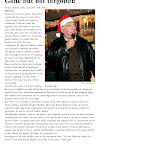

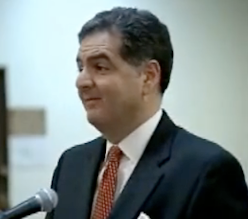
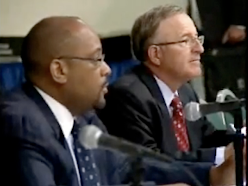
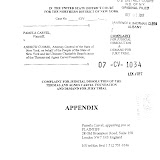
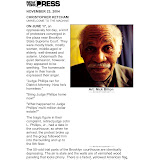

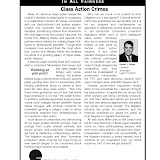

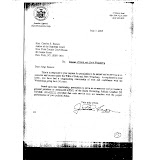
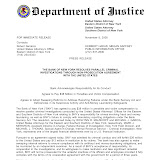
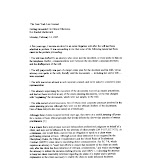
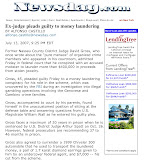
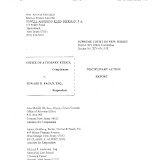
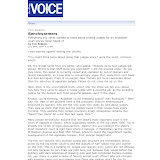
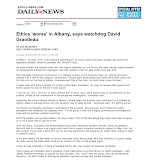
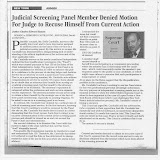

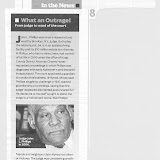
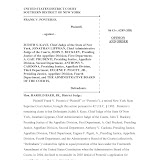
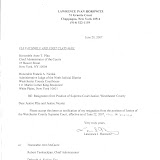
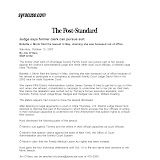
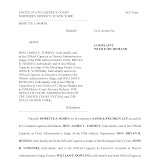

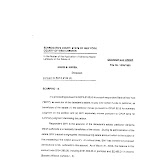
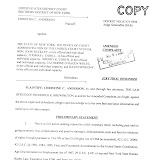
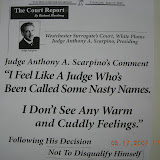
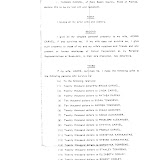
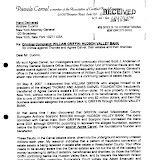
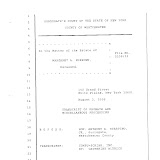
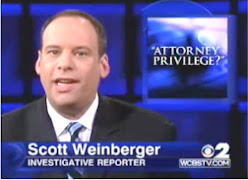
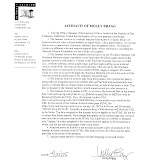

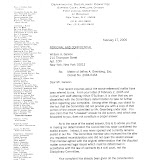
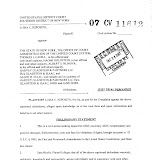
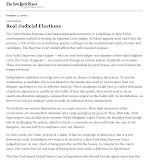
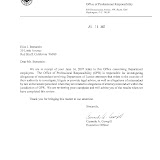
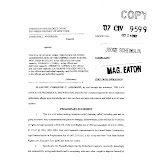
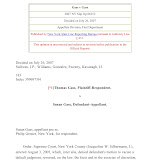
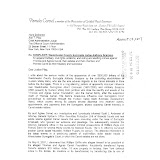

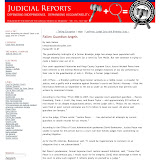
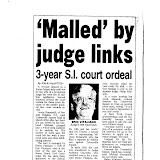
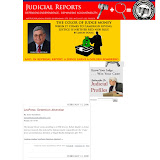
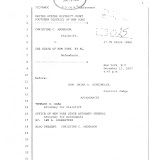
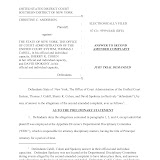
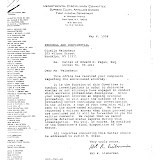
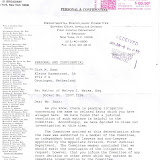
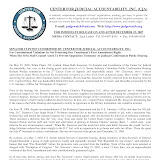
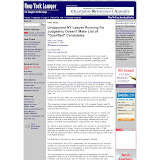
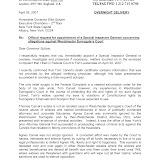
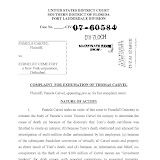
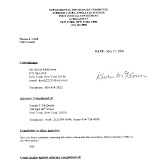
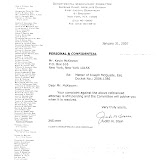
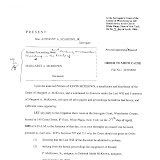
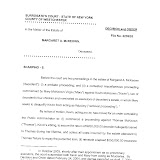
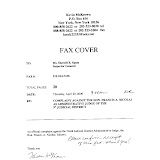
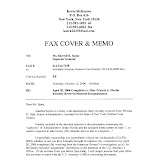
4 comments:
This "judicial Immunity" garbage is just another scam created by those insiders to protect themselves. There is nothing in the US Constitution or in any law that allows them to give themselves immunity from anything.
If we have a government of laws, then the same laws apply to all and there is no immunity for a judge violating those laws. But we have government courts of men(judges)who are not bound by law and who other judges protect with judicial immunity for acts in violation of law. Such a system deserves no respect, nor do the judges who perpetuate it.
The bottom line is that there is NO LAW, it's all a FRAUD! These Judges and lawyers have rigged the system and are stealing everything they can! Time for street JUSTICE and bring the rope to tie the bums up with!
Oh, oh!
Post a Comment